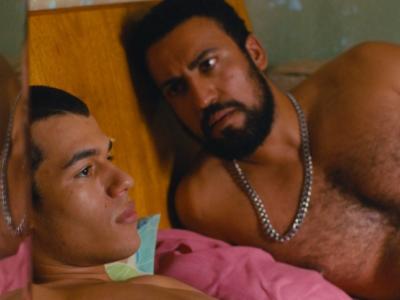Born in Tuchman, the larger-than-life warm sprit that was Sosa was a key player in the mid-60s nueva canción, the musical movement created by a group of singer song-writers that caputured the political idealism of a generation. But it was her deep rich alto voice that captivated audiences' hearts worldwide, and she toured the United States and Europe with great success.
In the early 1970s, Sosa released two concept albums in collaboration with composer Ariel Ramírez and lyricist Félix Luna: Cantata Sudamericana and Mujeres Argentinas (Argentine Women). She also recorded a tribute to Chilean musician Violeta Parra in 1971, including what was to become one of Sosa's signature songs, Gracias a la Vida. She also increased the popularity of songs written by Milton Nascimento of Brazil and Pablo Milanés and Silvio Rodríguez both from Cuba.
After the military junta came to power in 1976, the atmosphere in Argentina grew increasingly oppressive. Sosa faced death threats against both her and her family, but refused for many years to leave the country. At a concert in La Plata in 1979, Sosa was searched and arrested on stage, along with all those attending the concert. Their release came about through international intervention. Banned in her own country, she moved to Paris and then to Madrid.
Sosa returned to Argentina from her exile in Europe in 1982, several months before the military regime collapsed as a result of the Falklands War, and gave a series of concerts at the Teatro Opera in Buenos Aires, where she invited many of her younger colleagues to share the stage. A double album of recordings from these performances became an instant best seller. In subsequent years, Sosa continued to tour both in Argentina and abroad, performing in such venues as the Lincoln Center in New York City and the Théâtre Mogador in Paris. In a poor condition of health for much of the 1990s, she performed a comeback show in Argentina in 1998. In 1994, she played the Sistine Chapel in Vatican City. In 2002, she sold out both Carnegie Hall in New York and the Colosseum in Rome in the same year.
Her last London appearances were mercifully, quieter affairs than the one in Argentina in 1979 when police stormed the venue and arrested Sosa - along with the entire audience.
Several films have been made about her but few have assembled such a poignant mix of characters from her own family. In the most recent, Rodrigo H Vila's documentary, Mercedes Sosa: The Voice of Latin America, her son Fabian Matus takes the audience on a personal journey, to meet her surviving siblings, former neighbours who recall the sacrifices her parents made as they struggled to bring up their children.
In a career spanning four decades, she worked with performers across several genres and generations, folk, opera, pop, rock, including Martha Argerich, Andrea Bocelli, David Broza, Franco Battiato, Jaime Roos, Joan Baez, Francis Cabrel, Gal Costa, Luz Casal, Lila Downs, Lucio Dalla, Maria Farantouri, Lucecita Benitez, Nilda Fernández, Charly Garcia, León Gieco, Gian Marco, Nana Mouskouri, Pablo Milanés, Holly Near, Milton Nascimento, Pata Negra, Fito Páez, Franco De Vita, Lourdes Pérez, Luciano Pavarotti, Silvio Rodríguez, Ismael Serrano, Shakira, Sting, Caetano Veloso, Julieta Venegas and Konstantin Wecker.
Suffering from recurrent endocrine and respiratory problems in later years, the 74-year-old Sosa was hospitalized in Buenos Aires on 18 September 2009. She died from multiple organ failure on 4 October 2009, at 5:15 am. Her son, Fabián Matus, said: "She lived her 74 years to the fullest. She had done practically everything she wanted, she didn't have any type of barrier or any type of fear that limited her". Her undisputed talent, her honesty and her profound convictions leave a great legacy to future generations.



















